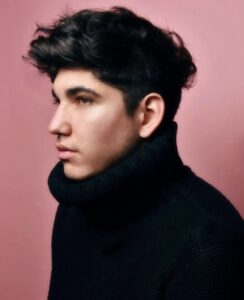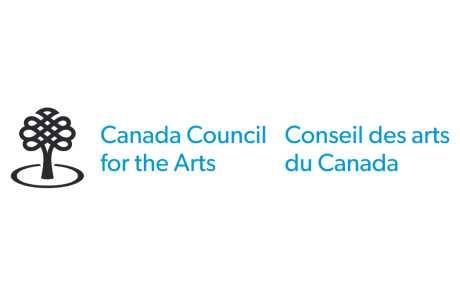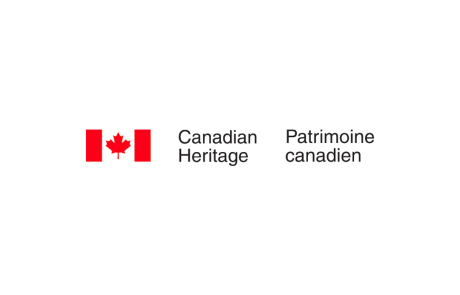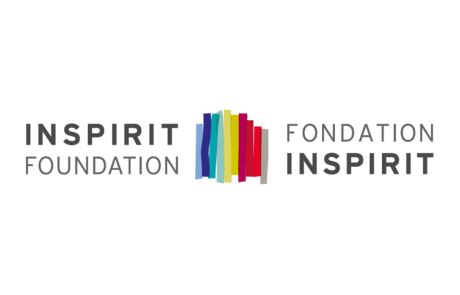Blushing Bodies
By Jesse King
Throughout this showcase, the viewer will experience the use of images and objects reminiscent of the human body to depict queer identity and the concepts of camp through space, shape and form. Queering an object is when we reexamine and reimagine an object through a queer lens and open its existence to a wider ideology – to take it out of the mainstream context of heteronormativity and bring it into liminal spaces.
Liminal space surpasses the classic social normalities that define identity, space, and time. One can theorize that the fringe exists physically and figuratively for the in-between that categorizes otherness. Explicitly focusing on otherness, we look at queer spaces that the 2SLGBTQAI+ inhabit. Queer spaces have the tough challenge of creating spaces because of the larger public’s perceptions of identity. Society has designed the notion of identities that relate to gender and sexuality, causing most queer-identifying individuals to live inside liminality.
Liminal spaces have, in some way, become a shield and provide room for queer individuals to thrive and to live authentically. This gives importance to continuing to create liminal spaces as artists and curators. For example, you, the reader, have created a liminal space by reading this text. You have made a liminal space in your mind by expanding room for otherness. Blushing Bodies is to bring forth queerness in the public space in the campiest way possible, to redefine how the viewer experiences the perspective on queer bodies. The artists chosen for the showcase have reinforced the meaning of the Exhibition Blushing Bodies: Alexander Millington, Lauren Rice, and Matthew Walton.
Alexander Millington deconstructs the human body through found imagery depicting the study of the human form, reinforcing the conceptual framework of Blushing Bodies. Millington plays with space, form, and the reality of human anatomy. The artist’s hand is present in the “W/hole” series through the multiple cutouts, creating alluring negative spaces in the physical body that can manifest and challenge the gender binary by refocusing the body and creating ambiguous forms.
Lauren Rice examines the human form through glass configuration, enhancing the viewer’s experience through colour and tension. Rice’s glass-blown forms show a duality of strength by incorporating leather harnesses to encapsulate the stiff glass, reinforcing its soundness in representing queer joy. The diverse glass sculptures are forged through extreme environments, creating an entity of beauty and resilience which some could face before reaching their safe space. The way Rice works, moulds and colours the glass to simulate flesh oozing out of the harasses creates the playfulness to the beauty of diversity and camp.
Matthew Walton creates a beautiful display of everyday queerness through the in-between, enhancing the mundane with neon colours and redefining aspects of cubism by trading rigidity for camp. Walton allows the viewer to experience the ritualistic and intimate melting of the “public and private space.” When looking at the sequence of weekdays Walton creates, the viewer can grasp the many different expressions of emotion through body language and colour, making each weekday its own liminal space because it’s forever changing.
I would like to thank all the artists involved, Alexander Millington, Lauren Rice, and Matthew Walton, for trusting me with their work and allowing me to conceptualize it within the exhibition’s Blushing Bodies framework.
I would also like to thank the ICCA and Toronto Outdoor Art Fair for their continuous support in creating this exhibition.
– Jesse King
Thank you to the Toronto Outdoor Art Fair (TOAF) as one of ICCA’s programming partners. They are a charitable non-profit organization behind Canada’s largest and longest-running annual contemporary art fair, bringing their established platform to showcase emerging artistic talent in partnership with our Indigenous Curatorial Collective / Collectif des commissaires autochtones (ICCA). This collaboration celebrates the Emerging Artists by Emerging Curator Award, spotlighting fresh voices in contemporary art.
Curator Jesse King has curated a standout feature exhibition of TOAF63 artists, titled Blushing Bodies, showcasing new works from emerging voices in Canadian art. This presentation is made possible with generous support from the Barry & Laurie Green Family Charitable Trust and TOAF.
TOAF champions inclusivity and accessibility in the arts, empowering artists to connect directly with diverse audiences and celebrate their unique creative voices. This collaboration with ICCA represents a meaningful opportunity to amplify Indigenous perspectives and art, supporting TOAF’s ongoing commitment to fostering a vibrant, welcoming platform for Canadian artists.
As part of this collaboration, Jesse King was also invited to write a curatorial essay that dives deeper into the concepts and framework of Blushing Bodies. It is a beautiful read — we hope you enjoyed it.
 Jesse King, born Ojibwe from Wasauksing First Nation (Eagle Clan), is based in Toronto. King’s work and curatorial interests frequently explore the many facets of identity, including discussions of queerness, gender, and the importance of cultural representation.
Jesse King, born Ojibwe from Wasauksing First Nation (Eagle Clan), is based in Toronto. King’s work and curatorial interests frequently explore the many facets of identity, including discussions of queerness, gender, and the importance of cultural representation.
King’s work has been exhibited nationally and internationally in Berlin, Germany, and Tampere, Finland. Their work has been in several independent publications, including fashion magazines such as Wonderland Magazine. King was the Exhibitions and Program Coordinator at imagineNATIVE Film + Media Arts Festival for three years anchoring themselves in celebrating all forms of art through collaboration with national and international artists and galleries. King now works with the Art Gallery of Ontario (AGO) as the Curatorial Assistant for Indigenous and Youth Programming. King sat on the Board of Directors for Trinity Square Video and is a new board member of The Indigenous Curatorial Collective.









